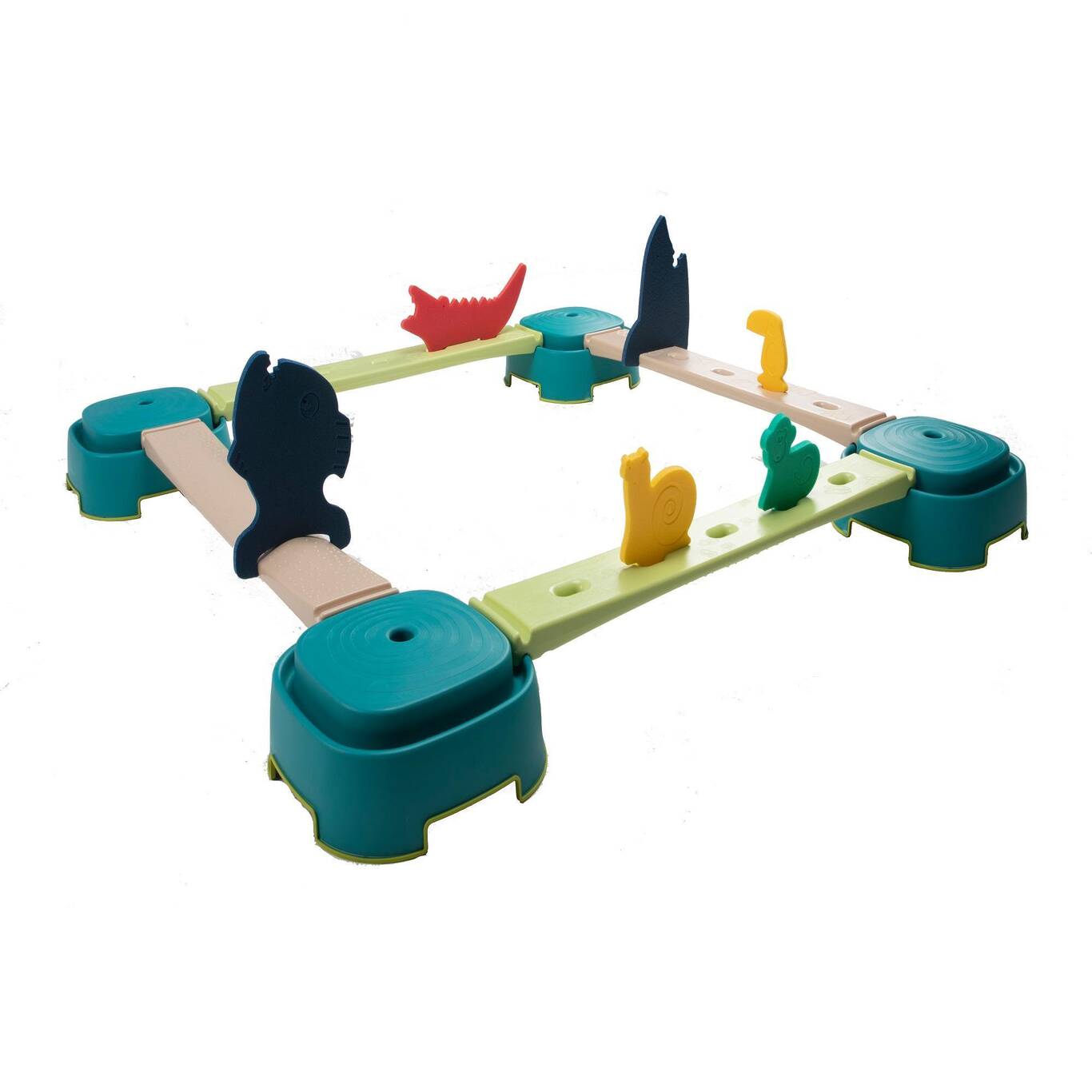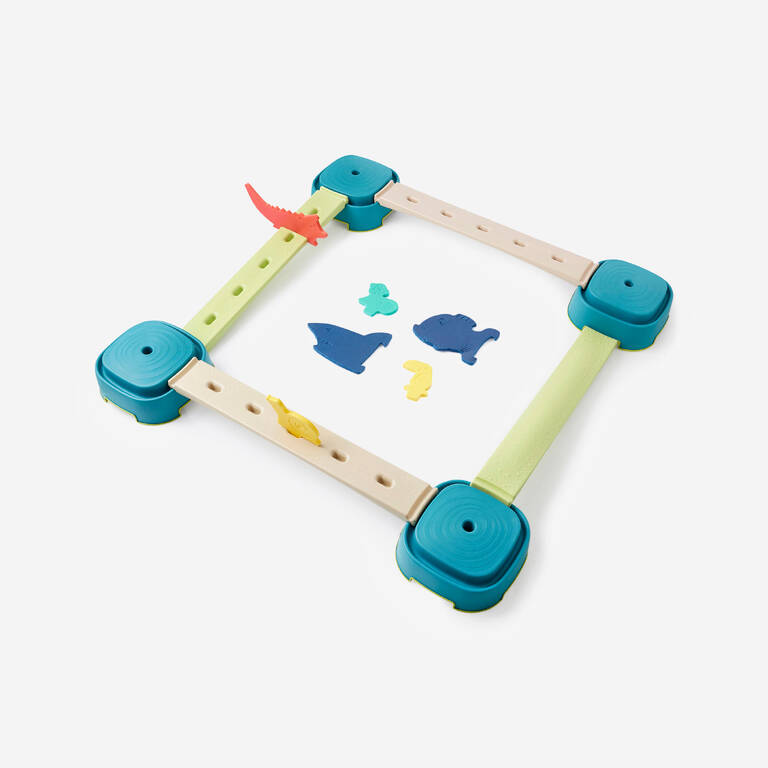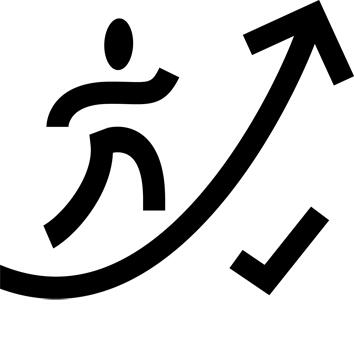Tested by children, approved by the pros
"To check the effectiveness of the kit, we did comparative tests with 18 children.
Nine of them used the balance kit for 20 minutes twice a week for two months, while the other nine did not. The results were clear: the children who used the product for several weeks improved their balance much more than those who did not."
Invent your own course
"With this balance kit, children can let their imaginations run free to build their own courses and create their own stories. They can start with the beams flat on the ground for reassurance. They can then be put higher or used on the curved side to increase instability. The small animals let them create their own stories, with animals to jump over or catch." Annabel, Baby Gym product engineer.
Specifications
Beam length: 700 mm
Base dimensions: 270 x 270 mm
Dimensions once the product is completely set up (square): 1200 x 1200 mm
Main stages of dynamic balance development
Before age 4, children must learn to move their body in a given direction, gradually moving forward with their feet side by side.
At age 4, children can walk with one foot in front of the other on a beam that is one and a half times the width of their feet.
At age 6, children can walk heel to toe on a beam that is at least as wide as their feet.
Psychomotor development:
Kids' psychomotor development depends on a combination of genetics, motor skills and mental abilities.
A product can impact a child's psychomotor development if it supports their motor skills.
There are several aspects to motor skills: the body map, dynamic coordination, balance, hand-eye coordination, fine motor skills and time and spatial awareness.
Body schema
The body map refers to a child's perception of their body, which allows them to master their movements and develop self-awareness. It is developed based on sensations and actions ("a body that feels, moves"), before being represented and described ("bodily representation", drawing of a person). The more a child moves, the more they learn to refine their body map and the better they're able to move.
Eye-motor coordination
Hand-eye coordination includes actions required for aiming with part or all of your body: for young children, following a trajectory, then aiming first at large objects and targets, with the hands and feet, before moving on to smaller and smaller objects and targets as they learn to control their fingers: playing the piano, threading beads on a string, writing.
Time and spatial awareness
Time and space awareness includes everything that involves a child's perception of themselves in time
(before/after, rhythmic activity, day/night, seasons, etc.) and space (in front/behind, on/under,
right/left, etc.)
Instructions for use
Do not store directly on the ground, but choose a protective mat to prevent damage to your floor.























